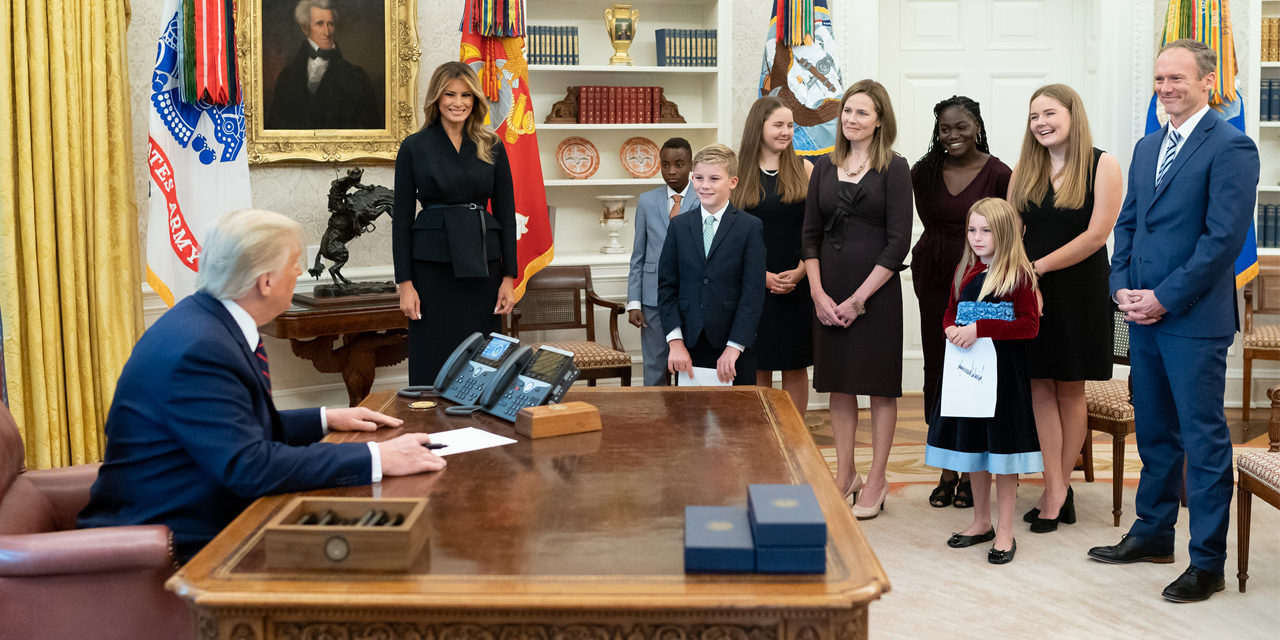Judge Amy Coney Barrett’s Supreme Court nomination is expected to be voted out of committee later this week, setting up her narrow but anticipated confirmation next week as the nation’s fifth woman jurist to the high court.
Now a judge on the Seventh U.S. Circuit Court of Appeals, the Barretts’ heartwarming personal story of adopting two children from Haiti has been in the spotlight, eliciting cheers from supporters and suspicion from detractors.
Radical Boston University professor Ibram X. Kendi accused Judge Barrett of being a “white colonizer” for adopting from the small Caribbean nation. Others have charged the family with being guilty of “white saviorism.”
Judge Barrett and her husband, Jesse, adopted Vivian and John Peter five years apart. At the time of Vivian’s arrival in the United States, the 14-month-old was critically malnourished. John Peter’s adoption, long caught up in unexplained red tape, was expedited following the devastating Haitian earthquake in 2010.
No matter how you slice it, the stories of Vivian and John Peter’s adoptions are inspirational and uplifting, shining examples of God’s grace and an expression and manifestation of one family’s selfless, Christian love.
Unless you’re The New York Times, the 169-year-old newspaper that appears determined to cast shadows and aspersions on not only religiously conservative families like the Barretts – but also on the larger issue of the practice of transracial adoption.
Conservatives regularly decry the bias of liberal media, and justifiably so. The “fourth estate” is now solidly to the left by almost every measure. But every journalist admittedly demonstrates prejudice to some degree, if only by what they put in a story – and what they leave out.
But the “Old Gray Lady” is deft at taking it to the next level when it comes to journalistic bias, especially when it deals with trying to tear down good people and great institutions that don’t comport with their worldview.
Sunday’s New York Times contained a detailed story about the Barretts’ adoption of John Peter, noting the circumstances surrounding his orphanage and other families who also adopted children from the facility during the same timeframe.
One of the other adoptive mothers, Cara Leadingham, who is described as disagreeing with Judge Barrett’s politics and the timing of her nomination, is quoted as telling the reporter, speaking of the other children adopted from the Haitian orphanage, “I’d be really interested to hear how the kids are … There are success stories and equally as many challenging stories,” Ms. Leadingham said.
Juxtaposing Judge Barrett’s reference to the orphanage as “wonderful” is a reflection from one of the adoptees themselves, an adolescent who was ten when he was adopted by a Montana family in 2010.
“If I was to put it in one word, it’s jail,” said Libien Becker, who is now 20.
The Times’ report highlights the disappointment and legal wrangling of families whose adoption applications never resulted in actual child placements. Haitian bureaucracy and problems with the sponsoring American agency are cited as reasons for the failures.
It’s true that not every adoption goes according to plan – for multiple reasons. Adoption is a complex and highly emotional matter involving tender lives that in most cases have suffered devastating loss.
But in this instance, The New York Times appears to have gone out of its way to leave the reader with a downright depressing view of international transracial adoption.
One has to wonder how the paper’s reporters and editors may have treated similar adoption stories had the nominee been more to their liking.
In any event, this recent telling is a far cry from a story published in the Times back in 1995, which detailed the adoption of Gerrye and Richard Zuckerman’s son, Matthew, from Russia. Titled, “Adoptive Parents Fulfill Dream,” the essay represents all the best hopes and dreams of a family thrilled by their new arrival.
“Everybody’s put on earth to do something,” Mrs. Zuckerman is quoted, as she watched her little boy play. “Maybe I’ve been put on earth to be an ordinary person. Not to do anything great, but to do something small that involves great love.”
Hundreds of thousands of adoptive couples would agree – just don’t expect to read about it in The New York Times anymore.
Photo from The White House
Visit our Election 2020 page






